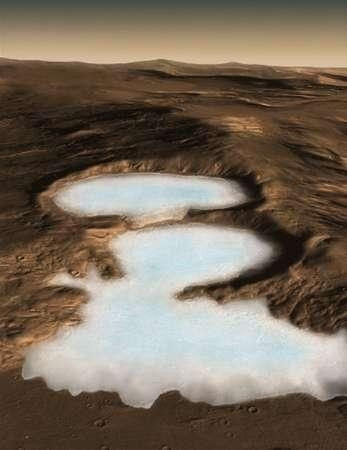Martian Structure Reveals Signs of Life on Mars
Authors of the Study State That Life May Have Existed on Mars

A Martian meteorite that had hit the earth more than a century ago has provided signs of life on Mars. The meteorite, Nakhla landed in Egypt in 1911 and has been studied by scientists. Scientists found out that the red planet contains water through the meteorite but now it has given them clues about the environment of the planet.
In 2006, they found a part of the meteorite housed complex carbon materials within it, this intrigued the scientists as the pattern reflected the effects of bacteria present in the rocks on Earth. The findings were disparaged as carbon is the fourth most abundant element in the universe.
Now, scientists have come across something that has proven that Mars is a potential home for living organisms. An oval structure discovered in the Nakhla meteorite shows a different pattern compared to the rest of it. It is made up of nanocrystalline iron-rich clay and contains a variety of minerals.
This structure during its formation got isolated from the rest of the system due to a formation of a layer of iron oxides and hydroxides. The findings are important as it points to the presence of clay in Nakhla; this was not discovered in the past. Clay is essential for the development of geographical and environmental conditions that are required for the formation of life.
The study is published in the Journal of Astrobiology. In the article, 'A Conspicuous Clay Ovoid in Nakhla: Evidence for Subsurface Hydrothermal Alteration on Mars with Implications for Astrobiology,' Elias Chatzitheodoridis of the National Technical University of Athens in Greece, and Sarah Haigh and Ian Lyon, the University of Manchester in UK, explained that the findings could be key to the discovery of life on the planet. They also described the use of tools including electron microscopy, x-ray, and spectroscopy to analyse the structure.
Authors stated that there is no accurate proof that state Mars houses life, but it is a huge indication that it could have existed.
Professor Sherry L. Cady, who was involved in the study, said that though the authors couldn't prove the definite evidence of life, their research provided sufficient data to examine the potential for life to inhabit the martian subsurface.
"These studies may also be useful for assessing the possible habitability of the martian subsurface," the report concludes.





















